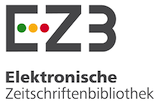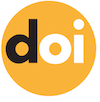PROTOCOLOS DE INDUÇÃO E SINCRONIZAÇÃO DO ESTRO EM OVELHAS
DOI:
https://doi.org/10.5216/cab.v14i1.13378Palavras-chave:
efeito macho, MAP, PGF2?, SuffolkResumo
The objective of this study was to evaluate the effects of progestagen treatment of different duration, PGF2a and ram effect on estrus induction synchronization in ewes. In Experiment I, ewes (n=48) received vaginal sponges with MAP (medroxyprogesterone) for nine or 14 days (G-9 and G-14, respectively), followed by PGF2a treatment and estrus detection. There were no differences in estrus (69.6 and 80%), conception (50 and 55%), and pregnancy rates (34.8 e 44.0%) between G-9 and G-14, respectively. In Experiment II, ewes (n=151) were divided into three groups: G-6 received vaginal sponges with MAP for 6 days, followed by PGF2a treatment and estrus detection, G-PGF received only PGF2a treatment, and G-EM were only exposed to males after a period of separation. Estrus rates were greater (p<0.05) in G-6 and G-PGF groups (58 and 39%, respectively) than in G-EM group (11%). In conclusion, it was possible to reduce the duration of progestagen treatment; however, the use of PGF2a during the breeding season transition without progestagen seemed to reduce estrus rates.PALAVRAS-CHAVE: efeito macho; MAP; PGF2a; Suffolk.
Downloads
Não há dados estatísticos.
Publicado
2013-03-26
Como Citar
CASTILHO, C.; DE ALMEIDA, M. F.; COSTA, M. Z.; DE CESARE, Ângelo G.; GABRIEL FILHO, L. R. de A. PROTOCOLOS DE INDUÇÃO E SINCRONIZAÇÃO DO ESTRO EM OVELHAS. Ciência Animal Brasileira / Brazilian Animal Science, Goiânia, v. 14, n. 1, p. 91–97, 2013. DOI: 10.5216/cab.v14i1.13378. Disponível em: https://revistas.ufg.br/vet/article/view/13378. Acesso em: 9 jan. 2025.
Edição
Seção
Medicina Veterinária
Licença
Autores que publicam nesta revista concordam com os seguintes termos:
- Autores mantém os direitos autorais e concedem à revista o direito de primeira publicação, com o trabalho simultaneamente licenciado sob a Licença Creative Commons Attribution que permite o compartilhamento do trabalho com reconhecimento da autoria e publicação inicial nesta revista.
- Autores têm autorização para assumir contratos adicionais separadamente, para distribuição não-exclusiva da versão do trabalho publicada nesta revista (ex.: publicar em repositório institucional ou como capítulo de livro), com reconhecimento de autoria e publicação inicial nesta revista.
- Autores têm permissão e são estimulados a publicar e distribuir seu trabalho online (ex.: em repositórios institucionais ou na sua página pessoal) a qualquer ponto antes ou durante o processo editorial, já que isso pode gerar alterações produtivas, bem como aumentar o impacto e a citação do trabalho publicado (Veja O Efeito do Acesso Livre).




























